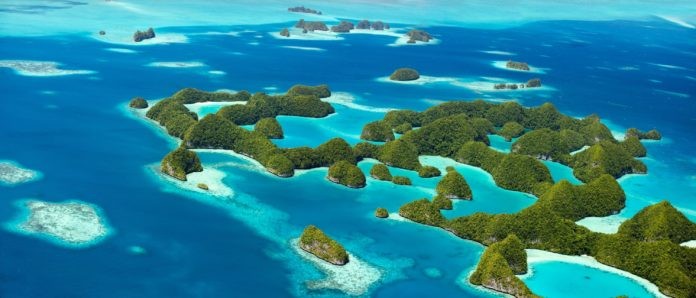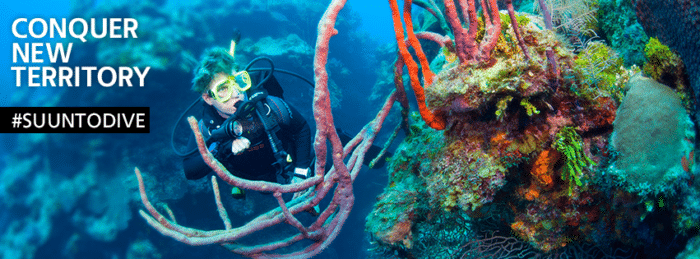The islands of Micronesia are scattered at the western edge of the Pacific Ocean, roughly 500 miles from the Philippines and Indonesia. These islands may be small, but they are giants in the world of scuba diving. They possess all the elements needed to make a world-class diving destination, including WW1 and WW2 wrecks, stunning coral gardens full of hard and soft corals, adrenaline-boosting drift dives, large animal encounters, dramatic walls, over 1,300 species of fish as well as incredible sites to see on the surface, Micronesia has it all.
If you get the chance to visit Micronesia, you should try to incorporate several of the islands into your trip, so you can sample some of the diverse underwater riches that Micronesia has to offer. No Island is the same; Palau itself is made up of over 350 islands, which is home to the incredible mushroom-like Rock Islands that are located at the intersection of the Pacific Ocean and the Philippine Sea.
Location
Top 9 Dive Sites in Micronesia
Blue Corner, Palau
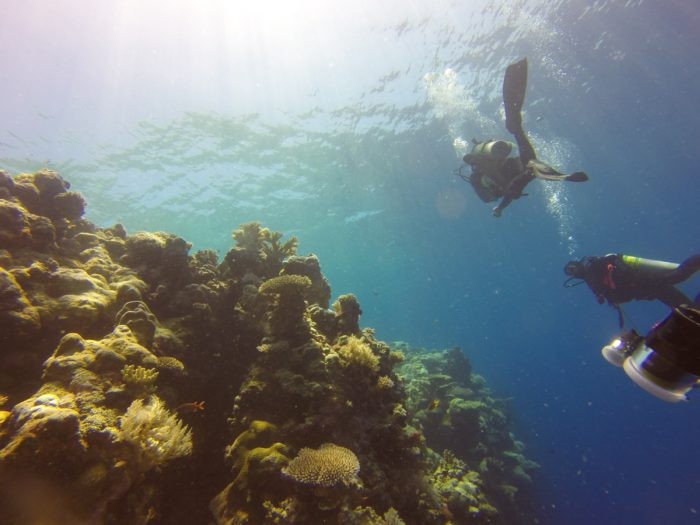
Blue corner is a coral peninsula that protrudes out of a steep wall. This is a great dive for advanced divers and if you own a reef hook, this is the place to use it. The dive begins with a drift dive down the wall; keep an eye out for the large Gorgonian fans, Anemones and Eels hiding within the wall. Once you reach Blue Corner, you will have the ability to hook your reef hook onto the edge and then fly like a kite over the abyss. Whilst hovering over the depths, you will find yourself surrounded by Grey Tip Reef Sharks, White Tip Reef Sharks, Mackerel, Tuna, Napoleon Wrasse, Spotted Eagle Rays and even Turtles. This is an incredible dive that should not be missed.
Ulong Channel, Palau
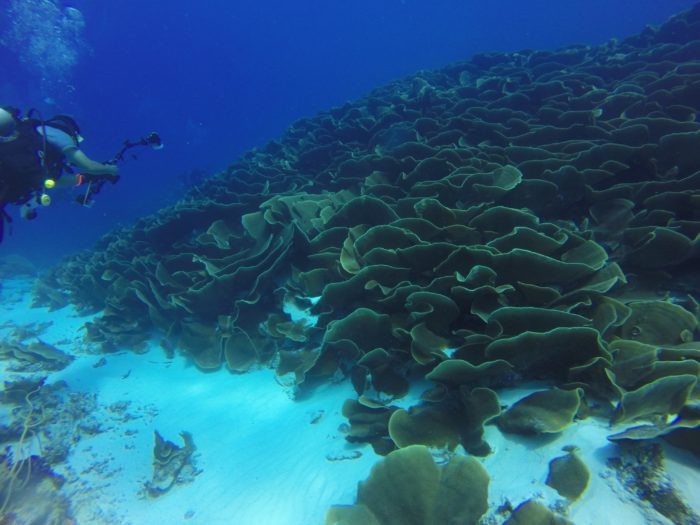
The Ulong Channel is considered one of the best drift dive sites in the world. The entrance to the Ulong Channel is full of stunning coral formations and once the tide comes in, witness the many sharks that feast on the fish that were stranded in the channel after the tide went out, previously.
This dive site is for advanced divers as the currents at Ulong Channel can be unpredictable and has been known to change dramatically mid-dive. Stay close to your guide, as you may need to change direction. The best time to dive the Ulong Channel is with an incoming tide, which is when the current is at its strongest and visibility is at its clearest, stretching for over 30m.
Jake Seaplane, Palau
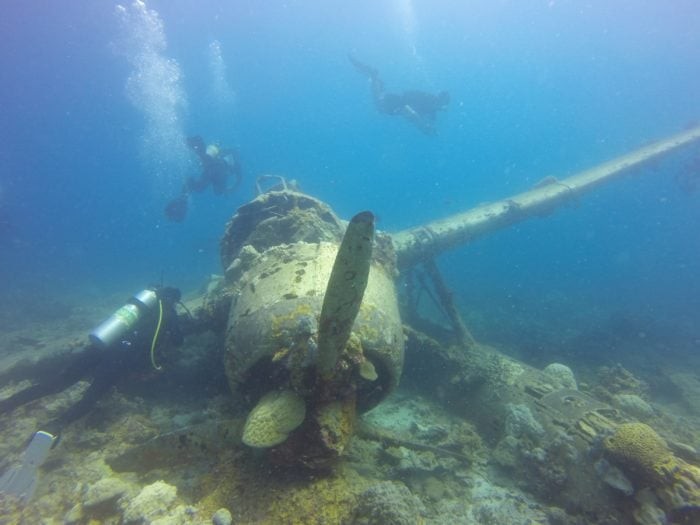
Located just 500 yards west of Meyuns Seaplane Ramp, lies an Aichi E13A-1 Japanese Navy Seaplane (aka JAKE). This low-flying reconnaissance seaplane is almost totally intact and was discovered from the surface, by a Palauan fisherman in 1994. It is one of the very few JAKEs in Palau and is a spectacular site.
JAKE Seaplane is sitting approximately 15m below the surface, on a large coral platform. It’s surrounded by Stag Horn, Lettuce, Table and Brain Corals as well as a variety of soft corals. It is truly a remarkable dive site that should not be missed.
Blue Hole, Guam
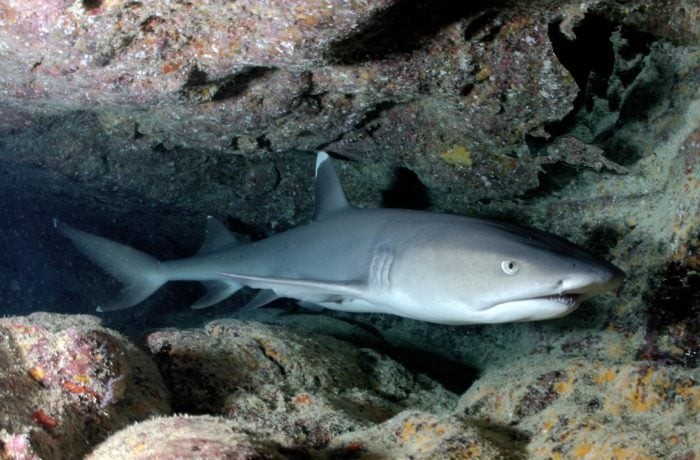
The Blue Hole is one of Guam’s signature dives. The Blue Hole is a phenomenal natural feature that opens out to the sea floor. The entrance to the dive site is roughly around 18m below the surface. The visibility of this dive site stretches for 30m+ and is home to Tuna, Reef Sharks and Unicorn Fish. The Blue Hole consists of a soft and hard coral covered shaft that travels down into the dark blue waters of the abyss. This location is amazing for those one-off photo opportunities so don’t miss out.
SMS Cormoran/Tokai Maru, Guam
Another famous dive site in Guam is the SMS Cormoran/Tokai Maru, which is a combination of two different wrecks from two different world wars. This is the only dive site that offers the opportunity to dive both wrecks at the same time. Each wreck offers a unique diving experience on their own, however having the ability to dive both at the same time is a memorable experience, which should be on any diver’s bucket list.
These wrecks sit side by side. The Cormoran stretches for 88m in length and was scuttled at the beginning of WW1. Its features include the hull, which is still intact, as well as lots of structures to explore and a cargo hold that is filled with car parts, beds, truck parts and a vast array of other objects.
The Tokai Maru was built in 1930 and was used as both a passenger ship as well as a long-range freighter. It is approximately 134m in length and has 2 large engines and a staggering 5 cargo holds. It was sunk by a US submarine during WW2 and coincidently found its resting place beside the Cormoran. The Tokai Maru is in relatively good condition for its age. Divers can see bomb damage on the bow of this huge freighter as well as the actual torpedo hole that lead to her demise, located in the 4th cargo hold.
Mi’il Channel, Yap
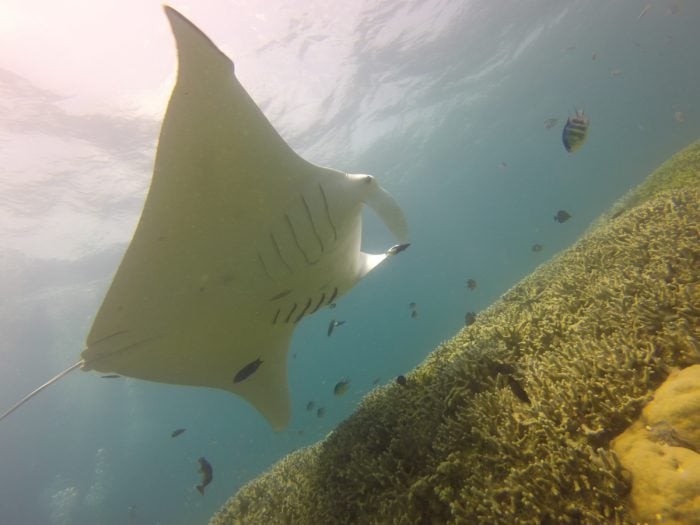
If you want to be surrounded by majestic Manta Rays, then this is the dive site for you. Mantas frequent this area so often, that they have even been given names by the locals. As well as seeing these incredible marine creatures, there is a good chance of seeing other pelagic animals. Mi’il Channel and the area at the mouth of the channel, known as Manta Ridge, is what made Yap one of the most famous dive sites in the world. At this location, you will find Mantas all year round.
The channel has a sandy, coral and rubble bottom with vertical coral walls. There are strong currents at this location, so new divers should not attempt this dive.
The best time to dive this channel is during an incoming tide, as it makes for an impressive drift dive with both sides of the channel visible, whilst you’re flying down the centre.
As well as the stunning Manta Rays, you will also see numerous reef fish including Humphead Parrot Fish, Large Barracuda, Reef Sharks, Eagle Rays and Hawksbill Turtles. Make sure you keep an eye out in all the nooks and crannies, as you will find Lobster and incredible Octopi.
Yap Caverns, Yap
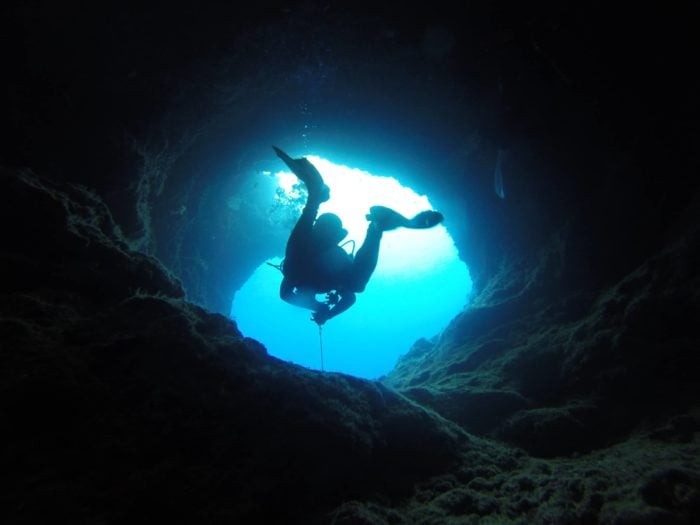
The Yap Caverns consist of a series of swim-troughs, tunnels, caverns and canyons, notched out of the coral wall, in the shallower depths of an amphitheatre-shaped dive site. At this location, you will see large numbers of White Tip Reef Sharks that use this location to nap. Grey Reef Sharks can also be found at this dive site, around the entrance of the caverns and are far more active than the White Tips. Expect to see large schools of pelagics, schools of 50+ Humphead Parrot Fish. Moray Eels and Stingrays are often seen near or within the caverns. This dive site is definitely not to be missed if you’re looking for large numbers of marine life and adventurous tunnels to explore.
Fujikawa Maru, Chuuk
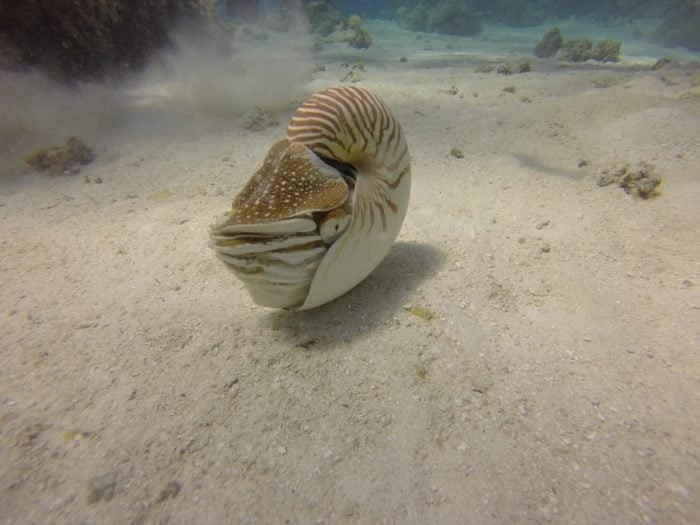
The majority of the wrecks found in the Truk Lagoon are quite deep, however, the Fujikawa Maru, is a former cargo ship located approximately 9-18m below sea level. This superstructure is absolutely jammed packed with parts from aeroplane fuselages to ammunition. There are a number of areas within this wreck that are easily accessible which makes for a great dive site. There are many interior spaces to explore including the pilothouse, galley and staterooms. The wreck has excellent coral growth and is home to abundant marine life. This wreck is regarded one of the best wrecks within the Truk Lagoon.
Hiroshi Point, Kosrae
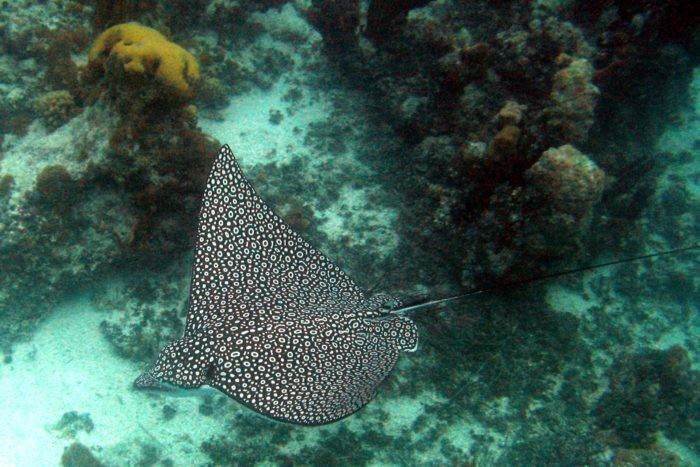
This dive site is home to massive coral heads, a stunning variety of marine life as well as Reef Sharks and Spotted Eagle Rays, which leave divers in awe and wanting to return to this spectacular dive spot. Upon entering the water, you are met with a stunning birds-eye view of a scene that just goes on and on. With a pure white sandy bed and beautifully coloured coral interspersed with the clearest of water around the island of Kosrae, this is a dive spot not to be missed. Scattered amongst the corals are a number of anemones with pink anemone fish that you could watch for hours darting in and out of the tentacles. Hiroshi point is so picture perfect that it almost feels like you’re in an aquarium, or in a scene of ‘Finding Nemo’.
There are so many Top Dive Sites in Micronesia, too many to include in this post, so if you have visited one that has not been mentioned, feel free to let us know about it in the comments below.
Brought To You By
This guide is brought to you by Suunto. We recommend that you use a Suunto Dive Computer when diving one of these dive sites. Suunto is the world’s leading dive computer designer and manufacturer providing diving instruments for recreational, technical and freediving. You can find out more at Suunto.com.

